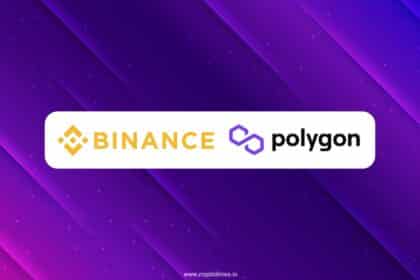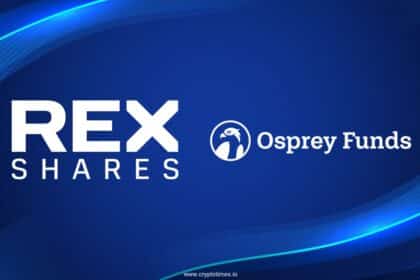For entrepreneurs looking to enter the digital asset market, launching a white-label crypto exchange offers a strategic and efficient path. This model provides a ready-made, battle-tested platform, allowing you to bypass lengthy development cycles and focus on what matters most: building your brand and growing your user base.
This comprehensive guide will walk you through everything you need to know to launch a successful white-label crypto exchange in 2025, from understanding the core concepts to navigating the complex regulatory landscape.
What is a White-Label Crypto Exchange?
A white-label solution is a fully developed, tested, and secured trading platform created by a specialized technology provider. As an entrepreneur, you can lease this software, rebrand it with your own logo, name, and design, and launch it as your own exchange.
Think of a white-label crypto exchange like starting a high-end restaurant franchise. Instead of designing the kitchen from scratch, creating a unique menu, and sourcing all your ingredients, you license a proven, ready-to-operate system.
The provider handles the intricate technical backend—including the trading engine, wallet infrastructure, and security protocols—while you manage the front-end business operations, such as marketing, customer acquisition, and user support.
Pros and Cons of White-Label Crypto Exchange
This model presents a compelling value proposition, but it’s essential to weigh the significant advantages against the potential drawbacks.
Pros
- Unmatched Speed to Market: This is arguably the most significant benefit. Developing a cryptocurrency exchange from the ground up is a monumental task that can easily take over a year and involve a large development team. A white-label solution can be customized and deployed in as little as 4-6 weeks, giving you a critical first-mover advantage.
- Drastically Lower Initial Cost: Building a custom platform is not only time-consuming but also incredibly expensive, with costs often running into the hundreds of thousands, if not millions, of dollars. White-label solutions replace this massive upfront capital expenditure with a more manageable setup fee and a predictable monthly subscription.
- Battle-Tested and Secure Technology: You are leveraging a platform that has already been rigorously tested, secured, and refined. This minimizes the risk of critical bugs, technical glitches, and security vulnerabilities that can permanently damage a new exchange’s reputation.
- Instant, Built-in Liquidity: One of the biggest challenges for a new exchange is attracting enough buyers and sellers to create a liquid market. Many top-tier white-label providers offer shared liquidity pools, meaning your exchange has a healthy and active order book from day one, which is crucial for attracting and retaining traders.
Cons
- Limited Customization: You are fundamentally using a platform built by someone else. While you can brand it with your look and feel, you have little to no control over the core features, trading pair availability, or underlying architecture. If you have a unique vision for a specific feature, it may not be possible to implement it.
- Revenue Sharing and Ongoing Fees: You don’t own the software. This means you will pay a recurring monthly licensing fee and, in most cases, a percentage of your trading fee revenue to the technology provider. This can impact your long-term profitability.
- Complete Provider Dependency: Your entire business operation is reliant on the stability and integrity of your chosen provider. If they experience significant downtime, suffer a security breach, or, in the worst-case scenario, go out of business, your exchange is directly and immediately affected.
- Brand Reputation by Association: The white-label software you use is likely being used by other exchanges as well. If another exchange using the same platform is involved in fraudulent activities or is poorly managed, the negative reputation can inadvertently splash onto your brand.
Core Features to Look For in a White-Lable Exchange
The success of your exchange is directly tied to the quality of your provider. Here are the non-negotiable features your white-label solution must have in 2025:
- Institutional-Grade Security: This is the most critical component. Look for providers that offer Multi-Party Computation (MPC) wallets, which provide superior security over standard multi-sig wallets. The platform should also store the vast majority of assets in cold storage, offer robust two-factor authentication (2FA) for users, and undergo regular third-party security audits.
- High-Performance Trading Engine: The platform’s trading engine must be capable of handling thousands of transactions per second (TPS) with minimal latency. A slow or crashing engine during periods of high market volatility will quickly erode user trust and send them to your competitors.
- Deep and Aggregated Liquidity: The provider should have established partnerships with major global exchanges and liquidity providers. This ensures tight spreads and a full order book across a wide range of trading pairs, including major pairs like BTC/USDT and ETH/USDT, as well as popular altcoins.
- Extensive Range of Supported Assets: To remain competitive, your exchange needs to support a diverse and growing list of cryptocurrencies. This includes not only the major Layer 1 blockchains but also popular memecoins, DeFi tokens, and various stablecoins.
- Integrated Compliance and Regulatory Tools: The platform must have built-in Know Your Customer (KYC) and Anti-Money Laundering (AML) functionalities. Look for seamless integrations with leading identity verification and blockchain analysis services like Chainalysis, Sumsub, or Jumio.
- Flawless User Interface (UI/UX): The platform should offer a clean, intuitive, and easy-to-navigate interface for both novice and experienced traders. A powerful and feature-rich mobile app for both iOS and Android is no longer a bonus—it’s a necessity.
Top White-Label Crypto Exchange Providers in 2025
Choosing a provider is the most critical decision you’ll make. A deep dive into their specific offerings is essential to find the right fit for your business model. Here are some of the leading solutions in the market today:
ChangeNOW.io (B2B)
A versatile and powerful option, ChangeNOW offers a comprehensive suite of B2B solutions tailored to different business needs. They are known for their extensive asset support and flexible integration options.
- Primary Solutions: Crypto Exchange API, Crypto Exchange Widget, White-Label Exchange, White-Label Wallet, and a unique White-Label Telegram Bot.
- Key Features: Their API provides access to over 1,500 coins and 110+ networks, with liquidity sourced from both CEXs and DEXs for unmatched depth. They offer both fixed-rate and standard exchange flows, and partners can earn a referral profit starting at 0.4%, with highly customizable commissions. A fiat on/off-ramp is also available upon request, enabling users to execute trades with their choice of currencies like USD, GBP, EUR, and others.
- Target Audience: Their solutions cater to a wide range, from startups and media outlets (using the Widget) to SMEs (White-Label solutions) and established enterprises (API integration).
- Partner Benefits: A personal manager and 24/7 support team are provided to all partners. After integration, ChangeNOW handles all technical maintenance. Profits can be withdrawn in 11 different cryptocurrencies or fiat.
AlphaPoint
A US-based, enterprise-grade technology provider, AlphaPoint is a long-standing leader in the space, known for its high-performance infrastructure and focus on security and regulatory compliance.
- Primary Solutions: White-Label Digital Asset Exchange, Brokerage Technology, and Asset Tokenization platforms.
- Key Features: Their platform boasts a high-performance matching engine capable of handling nearly one million transactions per second. They offer institutional-grade security with a focus on custody solutions. AlphaPoint also provides yield and staking products, allowing exchanges to offer their users interest-bearing accounts.
- Target Audience: Primarily focused on enterprises, financial institutions, and governments looking for robust, scalable, and secure market infrastructure. They are less focused on small startups.
- Partner Benefits: AlphaPoint provides a highly reliable and secure infrastructure, which is crucial for building trust with institutional clients. They offer a comprehensive suite of features that allows a new exchange to compete at a high level.
HollaEx
HollaEx stands out with its unique open-source model, which provides significantly more flexibility and customization than typical closed-source white-label solutions.
- Primary Solutions: Cloud-hosted Exchange (HollaEx GO), Self-hosted Exchange (DIY Exchange), and a custom-built Enterprise solution.
- Key Features: The core software is open-source, allowing developers to freely build upon and customize the platform. It features a simple, five-step cloud setup process for rapid deployment. The platform includes its own utility token, XHT, which can be used for activating the exchange and for staking.
- Target Audience: Their model serves a broad spectrum. HollaEx GO (Cloud) is ideal for startups and entrepreneurs with limited technical knowledge. The DIY (self-hosted) solution is geared towards developers and businesses that want full control over their infrastructure.
- Partner Benefits: The primary benefit is flexibility and control. Unlike other providers, HollaEx allows businesses to access and modify the source code, enabling deep customization. This also means you are not entirely dependent on the provider for feature updates.
B2Broker
B2Broker is a comprehensive fintech solutions provider that has a strong foothold in the forex and CFD brokerage industry, which they have extended to the crypto market.
- Primary Solutions: Turnkey Crypto Exchange, CFD/Forex Brokerage platform, and Liquidity Provision services for both crypto and forex.
- Key Features: B2Broker’s major strength is its deep, aggregated liquidity. They offer a B2B liquidity solution called B2BX, which pools liquidity from multiple top-tier exchanges. Their platform includes advanced trading features, loyalty programs, and multiple payment system integrations.
- Target Audience: Primarily geared towards forex brokers looking to expand into crypto, as well as new entrepreneurs wanting a feature-rich platform with robust liquidity from day one.
- Partner Benefits: Access to world-class liquidity is the main draw. This ensures tight spreads and a stable trading environment. They also provide 24/7 technical support and a modular architecture, allowing businesses to pick and choose the components they need.
ChainUp
Headquartered in Singapore, ChainUp is a global blockchain technology provider with a strong presence in the Asian market and a heavy emphasis on compliance and security.
- Primary Solutions: White-Label Crypto Exchange, NFT Marketplace solution, Crypto Wallet System, and a specialized Liquidity solution.
- Key Features: ChainUp emphasizes a security-first approach, with a risk control system that draws on their experience in the traditional finance sector. They support a wide range of trading types, including spot, futures, and options. Their NFT marketplace solution is a key differentiator.
- Target Audience: Their services are well-suited for both startups and established businesses, particularly those focusing on the Asian market or those wanting to integrate NFT trading capabilities into their platform.
- Partner Benefits: Partners receive a highly secure and compliant platform. The modular design allows for a customized solution, and their global presence ensures robust support across different time zones. The integrated NFT marketplace provides an additional, high-demand revenue stream.
The 2025 Regulatory Landscape
This is the most critical—and often most underestimated—aspect of launching an exchange. Operating an unlicensed crypto exchange in 2025 is a recipe for disaster, potentially leading to crippling fines, immediate shutdowns, and severe legal repercussions. Regulators globally are more sophisticated and coordinated than ever before.
While obtaining a license in major financial hubs like the United States or the United Kingdom can be an expensive and arduous process, many entrepreneurs are opting for licenses in more crypto-friendly offshore jurisdictions. These jurisdictions provide a solid legal framework that allows you to operate internationally while maintaining compliance.
- Seychelles: A very popular choice due to its relatively straightforward and clear regulatory guidelines. A Seychelles Securities Dealer License allows you to legally operate both a spot and derivatives crypto exchange. The process involves establishing a local company, meeting capital requirements, and demonstrating operational competence.
- British Virgin Islands (BVI): The BVI’s Virtual Asset Service Provider (VASP) Act of 2022 has created a well-respected and robust regulatory framework. It requires exchanges to register with the BVI Financial Services Commission and adhere to strict AML/KYC policies, making a BVI license a strong mark of legitimacy.
- Other Viable Jurisdictions: Other locations such as the Cayman Islands, Vanuatu, and specific free zones in the UAE also offer credible and well-regarded licensing options for crypto exchanges.
The Golden Rule: Do not launch without a license. The time, cost, and effort required to secure a license in a reputable jurisdiction are a fundamental and non-negotiable investment in your exchange’s long-term viability and success.
A Step-by-Step Checklist for Entrepreneurs
Here is a practical checklist to guide you on your journey from concept to launch.
- Define Your Niche and Target Market: Don’t try to be everything to everyone. Will you focus on a specific geographic region with localized payment options? Will you target beginner investors with a simple, user-friendly interface, or professional derivatives traders with advanced tools? A clear niche will guide your marketing, feature selection, and brand identity.
- Develop a Comprehensive Business Plan: Outline your entire strategy. This should include your revenue model (trading fees, listing fees, etc.), a detailed marketing and user acquisition strategy, your operational budget, and realistic user growth projections. This document is essential for securing any potential funding and will serve as your roadmap.
- Vet and Choose Your Provider: This is your most important decision. Do not simply choose the cheapest option. Thoroughly vet at least three to four potential providers. Request live demos, ask to speak with their existing clients, and scrutinize their security protocols, liquidity sources, and regulatory compliance features.
- Secure Your Operating License: Engage a reputable corporate services firm that specializes in crypto licensing. Begin the application process in your chosen jurisdiction as early as possible. This process can often take several months, so it’s crucial to start immediately.
- Establish Your Business Operations: This involves setting up the corporate and financial infrastructure of your business. This includes establishing banking relationships or crypto payment processing partnerships, hiring a core team for marketing and customer support, and creating your brand assets (logo, website, social media profiles).
- Customize and Rigorously Test Your Platform: Work closely with your chosen provider to apply your branding and any custom configurations to the white-label software. Before you even think about launching, conduct extensive testing to ensure every feature, from user onboarding to trade execution, works flawlessly.
- Launch, Market, and Iterate: Execute your marketing plan to attract your first wave of users. Focus on building a strong community through social media (X, Telegram, Discord), content marketing, and targeted promotional offers. Once launched, continuously gather user feedback to identify areas for improvement and work with your provider to enhance your platform.










